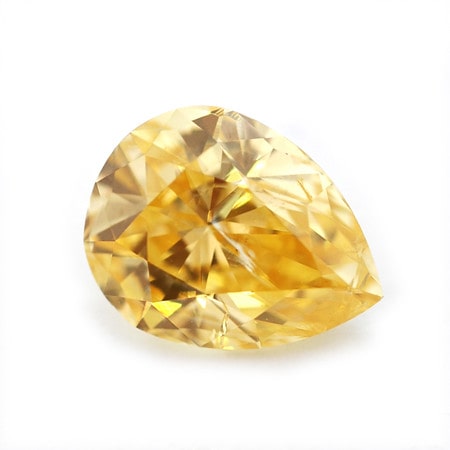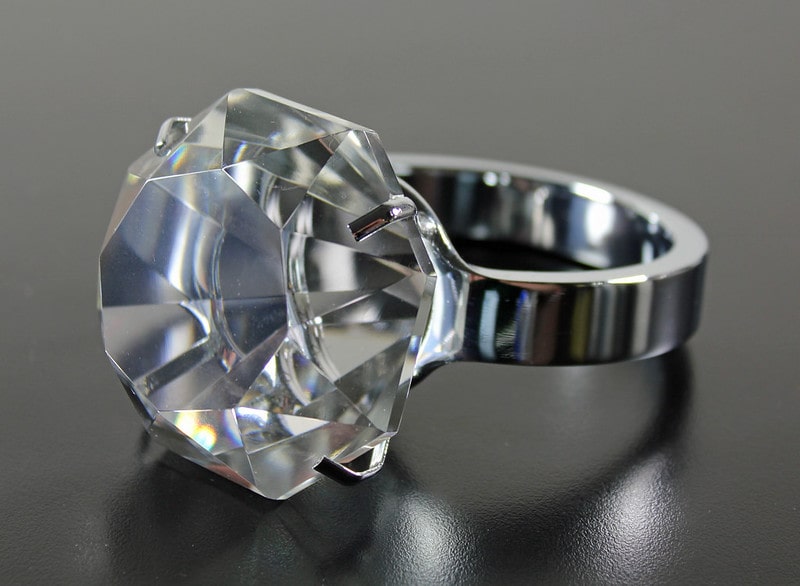Last updated on February 22nd, 2022
Over the years, diamond has remained to be among the top spectacular gemstone of all time. It is fascinating how diamonds can captivate one’s heart in a matter of a few seconds. Moreover, the gem remains remarkable for having been around even before the age of dinosaurs. Today, a diamond is still a symbol of love, making it an ideal present for special celebrations, birthdays, and anniversaries. Below are the amazing facts about diamonds that you should know.
1. It is no secret that diamonds come from underground, but many people are unaware of how far underground. Mined diamonds from below the Earth’s outer crust are approximately 100 miles deep in the upper mantle. The most bottomless hole to have been drilled only made it to about 7.5 miles. We require thirteen such holes to reach the prime depth of diamond-making.
2. The ancient Greeks and Romans supposed diamonds to be were tears from gods or splinters from falling stars. The Romans also believed that cupid’s arrows were sloped with diamonds, explaining the earliest relationship between diamond and romantic love.
3. Diamond is the only gem made of a single element: it is nearly 99.95 percent carbon, the commonly found element on the Earth. The other 0.05 percent can include one or more trace elements, which are atoms that aren’t part of the diamond’s essential chemistry. With the immense pressure and heat far below the Earth’s surface, a single carbon atom forms chemical bonds with the other four atoms. When they bond tetrahedrally, they create rigid three-dimensional crystals of unmatched hardness.
4. No one knows how long it takes diamonds to form underground as mined diamonds are ancient, probably billion years old. The process is hard to clock as it may take longer for diamonds to grow or take as little as hours. Thus, the process is not consistent due to changes in environmental conditions.
5. It takes a lot of heat and pressure to form diamonds. To be precise, it takes 725,000 pounds per square inch of pressure and a temperature of 2200 degrees Celsius to create the gemstone. These conditions allow the carbon atoms to bond correctly rather than becoming crummy old graphite.

6. The gemstones are brought to the Earth’s surface by explosive volcanic eruptions. To travel from the upper mantle to the Earth’s crust, they have to hitch a ride with a volcano, kimberlite volcanoes, to be specific. However, kimberlite explosions are rare; the most recent having occurred between ten to twenty five million years ago.
7. Diamonds and graphite come from the same crystallized carbon element. The graphite atoms are structured in two-dimension and layered instead of tetrahedral. The layers separate easily.

8. Not all diamonds are colorless. Colorless diamonds are considered the most valuable, the reason why they are more popular. However, you can find the diamond in varied colors, including blue, yellow, green, red, purple, brown, orange, and even black. The diamond color depends on the trace elements present or the introduction of other impurities during formation.
9. Surprisingly, most mined diamonds are rarely used in jewelry (Only about 20% of all diamonds mined have a clarity rating high enough for the diamond to be considered appropriate for use as a gemstone.) As a result of their hardness and durability, diamonds are helpful in various industrial applications such as drilling, cutting, and polishing. Since the large portion of rough mined diamonds is not suitable for jewelry, they work as industrial diamonds.
10. The name of diamonds is derived from their hardness. The word has originated from the Greek word ‘adamao,’ which translates to ‘I subdue.’ Moreover, the root word has similar words, such as adamantine, which means ‘unbreakable.’
11. Diamonds are among the hardest natural substance on the surface of the Earth. According to Mohs Scale, diamonds are four times harder than the second hardest element on the scale. Therefore, the only piece of equipment that can cut through a diamond would be another diamond.
12. Diamonds have been coveted and valued for thousands of years. The evidence shows that diamonds were being traded in India as early as the 4th century BC. In the first century AD, the Roman naturalist quoted that diamond is the most valuable among all things in the world.

13. The largest colorless diamond discovered is the Cullinan Diamond (named after Thomas Cullinan, the mine′s founder, discovered at the Premier No. 2 mine in Cullinan, South Africa, on 26 January 1905), which weighed 1.33 pounds. He found it in 1905, and the mine’s owner and the leaders gave it to King Edward and later cut it into nine large pieces and one hundred small ones. The three largest are on display in the Tower of London among the crown jewels.
14. The largest coloured diamond on earth is the Golden Jubilee, weighing in at 545.76 carats.
15. The beautiful Eureka diamond was discovered by a fifteen-year-old South African boy known as Erasmus Stephanus in 1867. The original weight was 21.25 carat found near Hopetown on Orange River. The polishes gemstone weighs 10.73 carats today.

16. A candle flame has millions of tiny diamonds. Throughout history, poets have compared the flickering of a candle flame to the gorgeous effect of diamonds. It turns out the creative writers were not too far from the truth. Wuzong Zhou, a professor of chemistry, states that about 1.5 million diamond nanoparticles are present in a candle’s flame.
17. Scientists have the capability of turning the remains of a loved one into a diamond. If you would love to have a lasting connection with someone you cherish who has passed away, you have the option of compressing their ashes and turning them into an artificial diamond.
18. Diamonds were only available to the elites and not accessible by the general public. In the twentieth century, France passed a law indicating that only the king was allowed to wear diamonds. Since diamonds were rare, only royal members were to wear the fascinating gemstone. The South African diamond discovery is what changed the world diamond industry forever.
19. Diamonds lose up to fifty percent of their weight during the cutting and polishing process. Diamond undergoes a process that sees the original rough importance diminish to attain perfect proportion and symmetry.

20. The first known use of the diamond engagement ring took place in the year 1477. Archduke Maxmillian of Austria gifted Mary of Burgundy a gold ring with an M, spelled out in diamonds.
21. For an extended period, India was the only country with diamonds. Diamond trade can be drawn back to the 1st century AD and was seen by some as the most precious stones on the Earth. India dominated the market until the 1900s, when the supply started to run short and diamond mines begun cropping up in other parts.
22. The world’s mined diamonds come from a handful of countries. Russia and Botswana are the leading producers, with almost half of the annual diamond production, while Canada, South Africa, and Angola represent the remaining diamonds. These five countries produce about eighty-eight percent of the world’s diamonds.
23. You can grow natural diamonds in controlled conditions. Lab-grown diamonds are structurally and chemically identical to mined ones. In 2018, the Federal Trade Commission revised its Jewelry Guides to eliminate any distinction between mined and lab diamonds.
24. While lab-grown diamonds are starting to change the world of diamonds recently, the first artificial diamond was created in the 1950s, more than seventy years ago. General Electric funded the process, but the resulting gemstones were smaller than 0.1 carats. They are used in their unpolished form for industrial purposes.
25. Lab-grown diamonds create less waste and cost less to manufacture. While mining diamonds can be an unfriendly process to the environment, a growing diamond in the laboratory is ethical and ecologically responsible.
26. Diamonds in the lab can get to multiply. Although it may be impossible to estimate how long it takes for the natural diamond to form underground, the lab process is relatively fast.
27. Some diamonds might have formed from outer space, an interstellar environment. Carbonado diamonds found in South America and Africa are believed to be deposited by an asteroid that impacts the Earth about three billion years ago.
28. Today, most of the diamonds on the market are extracted underground using heavy machinery and high technological equipment. However, before then, miners found diamonds alongside or at the bottom of rivers, in a process known as alluvial mining.
29. Scientists reveal that dwarf stars in space contain a diamond core.
30. During the Middle Ages, the gemstone was thought to have some healing properties, curing ailments ranging from mental illness to fatigue. Still, ancient Hindus used them in the eyes of holy statues since they believed that diamonds could protect them from danger.
. . . continue reading on the next page
